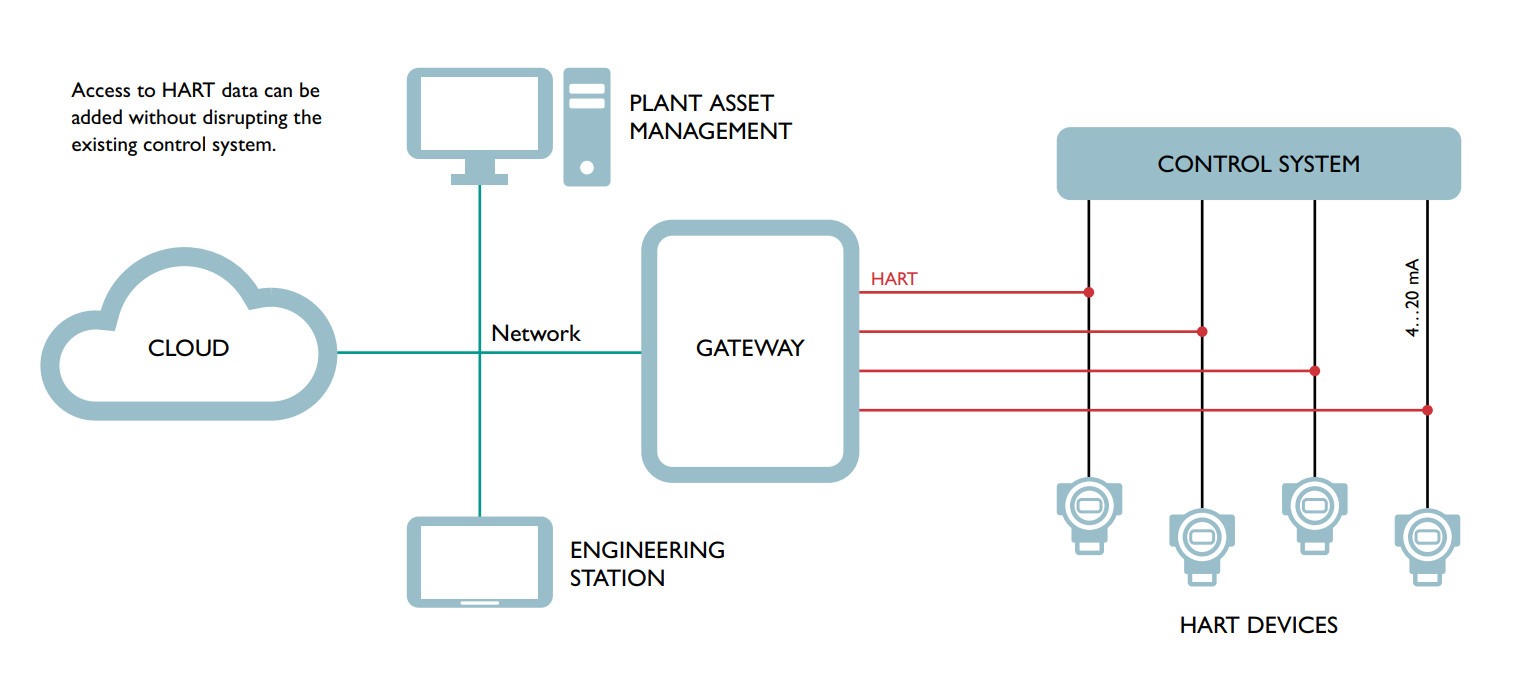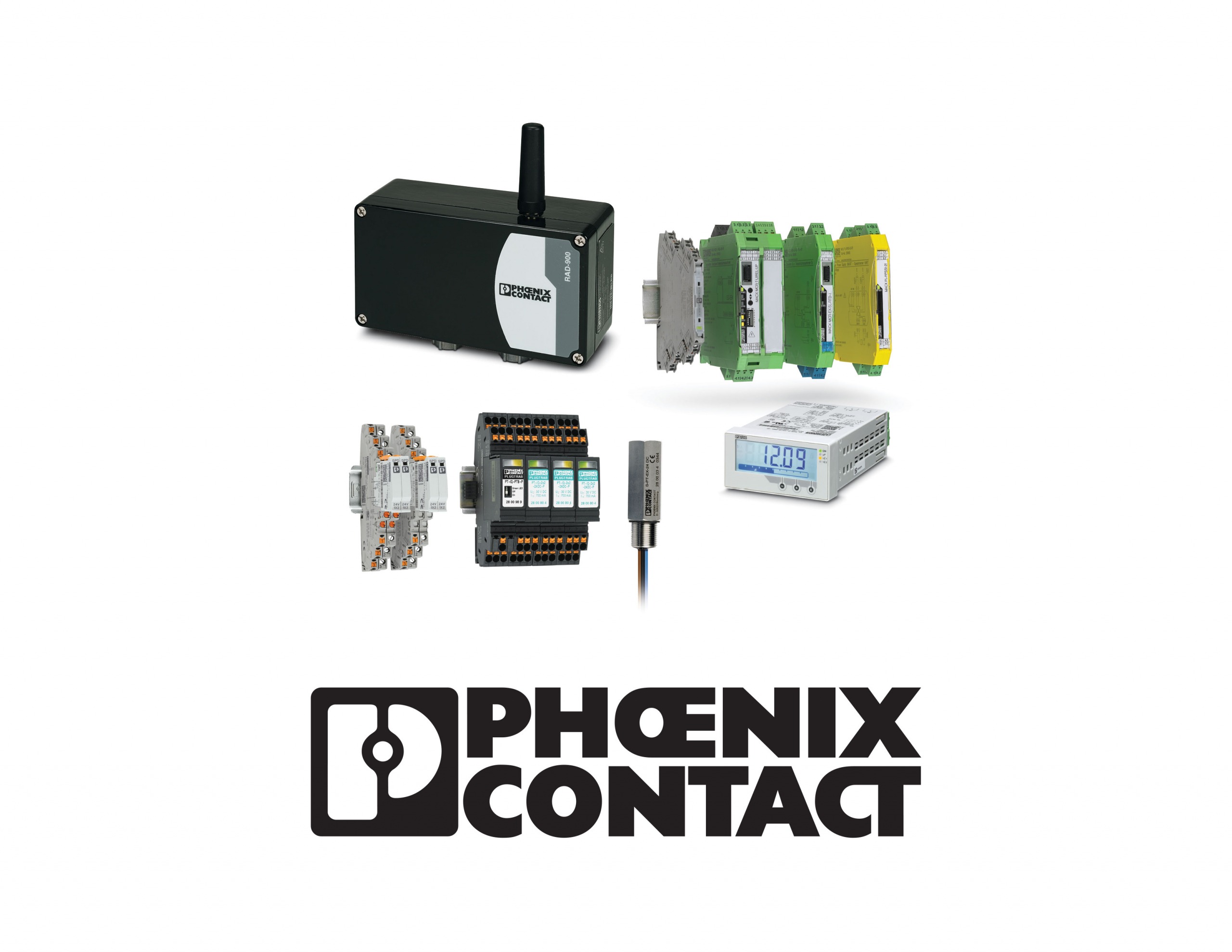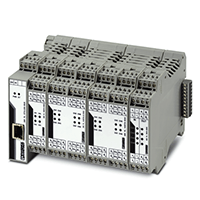Standardized nearly 30 years ago, HART (Highway Addressable Remote Transducer) is the most broadly supported protocol in the world for the process industry. HART was originally developed as a way to make analog process measurement devices “smarter” by superimposing digital data on a 4…20mA signal loop.
The standard continues to develop
Today, more methods of connecting are regularly being introduced – including wireless and Ethernet. Backward-compatibility and manufacturer interoperability safeguard you from the constraints of vendor-specific or regional solutions.
Enhanced Connectivity
The Industrial Internet of Things (IIoT) opens new possibilities for data collection and analysis by first networking, and then connecting devices to the cloud. The Namur Open Architecture (NOA) concept describes how the classic automation pyramid can be easily integrated into fast-paced IT systems from the field level to corporate management, without affecting the availability and security of a plant. Both the IIoT and the NOA concept require additional device connectivity and data sets. HART provides a rich data pool from which to draw for monitoring and optimization tasks as well as predictive maintenance without influencing the core process.
HART Devices Unlock Your Data
The most basic use of HART allows users to configure their devices, setting the zero, span, and engineering units, calibrating the 4…20mA loop, and selecting the sensor type. Most HART devices are multivariable, meaning that they can provide multiple measurement values, although only the primary variable is represented by the 4…20 mA signal.

Capabilities and Benefits Increase
Expanded use of HART-capable devices enables users to perform specialty operations, such as partial-stroke testing, data logging, and asset management using the information specific to each device type. These predictive maintenance operations help to increase plant availability and reduce operating costs. You’ve already made the investment in HART. Now it’s time to put that investment to work.
Level
The status of the sensor can be reported to aid in troubleshooting faulty measurements. A level transmitter may also support high and low alarm set points.
Temperature
In addition to the process temperature, ambient temperature can be reported along with cold junction temperatures. Further, the sensor breakage can be detected and reported to aid in troubleshooting.
Pressure
Differential pressure transmitters have variables for differential pressure, cell temperature, and static pressure that can be used for calculating flow. Sensor breakage and status can also be detected.
Flow
Coriolis mass-flow meters can report process media density. A DP-based mass-flow meter can report absolute pressure and temperature in addition to the main process measurement.
Applications using HART
The utilization of HART data is very scalable, ranging from device configuration in the field or on the bench, to enabling facilities to implement a predictive maintenance program for a single device type (such as flowmeters), to implementing a complete plant asset management strategy.
Guided Wave Radar Optimization
Guided Wave Radar (GWR) level transmitters work by sending a pulse down the guide (such as a cable, rod, or coax) and measuring how long it takes to receive the signal back. This is also called Time Delay Response, or TDR. GWR level gauges frequently ship pre-configured from the manufacturer by specifying tank height, media dielectric, and other process conditions. However, the mapping of the envelope curve of a particular solution cannot be factory configured and must be done with the transmitter installed. Obstructions that may be in the tank, such as mixing paddles, point level devices such as tuning forks or capacitive probes, valves, or other mechanical obstructions can cause faulty readings. By using HART, it is possible to graphically identify where these obstructions are, and “zero” out those obstructions to eliminate erroneous measurements.
Flowmeter Verification
Flowmeters operating based on a coriolis, electromagnetic, ultrasonic, vortex, or thermal measuring principle do not have moving parts subject to wear. But they can have problems that require recalibration, including failure of an internal part or degradation because of temperature effects on electronics — or corrosion, clogging, or coating buildups in the flowmeter body.
Flowmeter faults during operation that go undetected by diagnostics can result in an unexpected plant shutdown, product loss, or a reduction in product quality. Process manufacturing and other industrial facilities must often provide documented evidence of flowmeter performance to maintain compliance with various regulatory agencies, ensure product quality, and optimize production. Often, this is achieved with “wet calibrations,” in which the flowmeter is removed from the process and taken to a lab for formal testing and certification or re-calibration. After calibration, the instrument is then sent back to the facility to be reinstalled.
Using HART helps plants accomplish these tasks through built-in verification techniques. The flowmeter’s transmitter electronics run an onboard diagnostics program during which all relevant components of the instrument are checked to confirm and document that the instrument is still in calibration and none of the meter components have drifted outside original tolerances.
Valve Maintenance
Valves account for up to 90% of safety failures in a facility and 20 to 50% of maintenance turnaround time when using preventative maintenance schedules. Using diagnostic data provided via HART, operators can periodically review valve signatures to find early indicators of wear or damage before a failure occurs. A valve signature is a chart that plots two diagnostic parameters against each other, such as the air pressure and the valve travel distance. The valve signatures are checked periodically and compared to earlier signature data to see how the performance has changed over time.
Ethernet HART Multiplexer
The GW PL…-BUS modular gateway system provides a simple way to parameterize and monitor HART devices via HART-IP, PROFINET, Modbus TCP, OPC UA, and FDT/DTM for easy integration into nearly any host system. It is a modern alternative for traditional RS-485 HART multiplexers.
Suitable for any Application
The Ethernet HART Multiplexer consists of a head station and a variety of HART expansion modules to suit any application need. A digital I/O expansion module enables alarm and status monitoring, as well as actuation of motors, pumps, blowers, and other equipment. Communicate with up to 40 HART devices per system. The modular design provides a scalable solution for modern distributed control systems and phased roll-outs.
The multiplexer features a HART master on each channel for the fastest possible updates and execution times, optimizing partial-stroke testing, valve diagnostics, and batch data transfers.
We Make HART Accessible
Phoenix Contact’s portfolio of HART products connects you to your process in ways never before possible.
- Access diagnostic data from anywhere via Ethernet
- Add new measurement points without the time and expense of wiring
- Connect your devices and provide convenient access for testing
- Protect your investment with surge protection and isolation
Phoenix Contact is your trusted partner for reliable HART communication.



